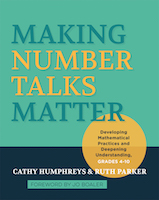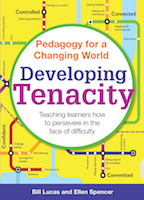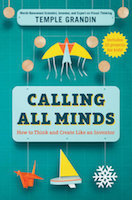We are driven by curiosity. It is an innately human quality that has driven us to explore, ask questions, investigate, wonder why and search for a deeper understanding. In a very fundamental way curiosity is the driver of all self-directed learning. It is our desire to find out more, unlock new knowledge and answer our questions (big ones and little ones) that compels us to learn.
Sir Ken Robinson famously and provocatively asked “Do Schools Kill Creativity?”. The same question might be asked about curiosity.
There is some evidence that this might be the case. Numerous studies have reported that the number of questions asked by a child steadily declines as they grow. From somewhere around the 300 per day mark at age four this declines to less than 100 by the time the child is nine years old. This is of course linked to a steady increase in what the child has achieved sufficient knowledge about and a decline in the number of new encounters in their daily exploration of the world and yet it remains as a point of concern as there are potentially other factors at play here.
As students experience what school is about they quickly learn that what matters most to their teachers, and for their success, is right answers. The patterns at the heart of education send powerful messages about what learners are supposed to do. Spend a little time in the average classroom and you see that the dominant pattern is typified by the teacher asking a question and the student providing an answer. Indeed, an alien visitor arriving with no knowledge of “who is who” would be forgiven for assuming that the teacher is the curious one and the students are the keepers of humanities knowledge.
Some students might miss the unsubtle messaging that exists within the dialogical structure of the classroom but they surely will not miss it when the time comes for their learning to be assessed. Few if any assessments offer marks for questions that the students may have at the end of a learning module, even in environments that claim to value curiosity. If we are to value curiosity and seek to encourage it surely it would be one of the dispositions that we assess. Unfortunately the disposition most commonly assessed is recall of knowledge followed closely by the ability to communicate that knowledge in the prescribed method of an essay.
Recently there has been debate about the place that curiosity plays in learning and its relationship with knowledge. The claim is that for a learner to ask quality questions about a field of knowledge they must first possess a sufficient level of knowledge. This line of thinking is used to argue for a pedagogical model that begins with teacher to student transfer of knowledge and moves opportunities for questions and curiosity to the latter parts of the learning journey. This raises some interesting questions.
It is reasonable to agree that a degree of knowledge is required before an individual is likely to arrive at meaningful questions that might drive an inquiry. Before I wonder what is on the other side of the door I need to become aware of the door. Before I am curious about a phenomenon in physics I need some exposure to that phenomenon. The question is do I require knowledge or does an engaging prompt that stimulates curiosity enable my mind to generate relevant questions at a novice level and then as I acquire knowledge ask more complex questions typical of an expert.
Mihaly Csikszentmihalyi’s description of how the creative process is sparked parallels the role that curiosity plays in sparking a desire to learn:
The creative process starts with a sense that there is a puzzle somewhere or a task to be accomplished perhaps something is not right somewhere there is a conflict a tension a need to be satisfied. The problematic issue can be triggered by a personal experience by a lack of fit in the symbolic system by the stimulation of colleagues or by public means. In any case without such a felt tension that attracts the psychic energy of the person there is no need for a new response therefore without a stimulus of this sort the creative process is unlikely to start.
(Mihaly Csikszentmihalyi)
Curiosity exists at the edge of knowledge. For this reason even the most wise person has a point where the extent of their knowledge is reached; what they do at this point is what makes them wise. With this in mind rather than extinguishing curiosity learning should shift the point at which we rely upon our curiosity ever deeper into our learning journeys and further from the point of what is known. Curiosity is the driver of learning for the novice and the expert.
There is a real advantage in including curiosity inducing learning into our routines. Research by Gruber, Gelman & Ranganath reveals the power of curiosity for learning in the moment and its benefits to learning in other contexts. As reported by Jackie Gerstein of “User Generated Education”:
The study revealed three major findings. First, as expected, when people were highly curious to find out the answer to a question, they were better at learning that information. More surprising, however, was that once their curiosity was aroused, they showed better learning of entirely unrelated information that they encountered but were not necessarily curious about. Curiosity may put the brain in a state that allows it to learn and retain any kind of information, like a vortex that sucks in what you are motivated to learn, and also everything around it. Second, the investigators found that when curiosity is stimulated, there is increased activity in the brain circuit related to reward. Third, when curiosity motivated learning, there was increased activity in the hippocampus, a brain region that is important for forming new memories, as well as increased interactions between the hippocampus and the reward circuit.
So if it is agreed that curiosity is an effective driver of learning and has an important role to play in enhancing the effectiveness of our learning, what opportunities do we offer for students to demonstrate curiosity? How do we move curiosity from being something teachers exhibit while planning a unit to one that is at the heart of our learners experience of school? How do we shift the narrative of education from one that values right answers to one that values curiosity and the search for answers.
By Nigel Coutts
Related:
Questions at the Heart of Learning
The Questions that Matter Most
Helping Students to Become Problem Finders
More than Knowing the Right Answer
Mihaly Csikszentmihalyi (2013) Creativity: Flow and the psychology of discovery and invention. New York; Harper Perennial.
Matthias J. Gruber, Bernard D. Gelman, Charan Ranganath. States of Curiosity Modulate Hippocampus-Dependent Learning via the Dopaminergic Circuit. Neuron, 2014














